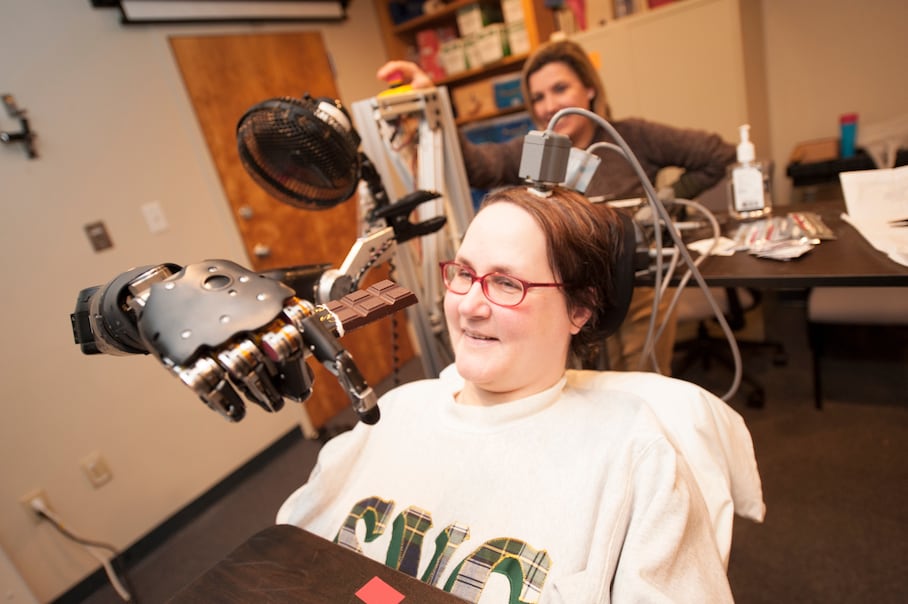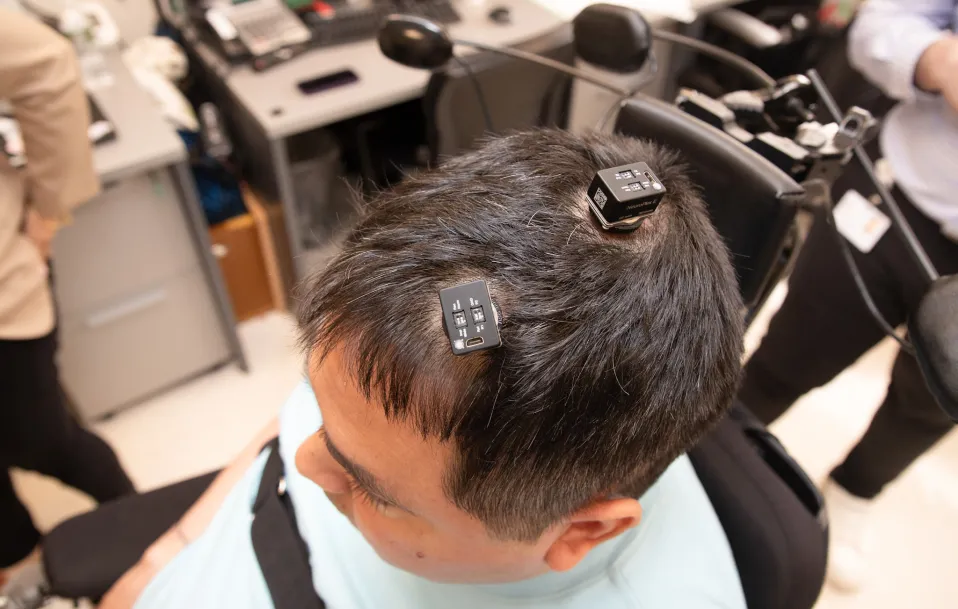By Abby Phillip
Over at the Defense Advanced Research Projects Agency, also known as DARPA, there are some pretty amazing (and often top-secret) things going on. But one notable component of a DARPA project was revealed by a Defense Department official at a recent forum, and it is the stuff of science fiction movies.
According to DARPA Director Arati Prabhakar, a paralyzed woman was successfully able use her mind to control an F-35 and a single-engine Cessna in a flight simulator.
It’s just the latest advance for one woman, 55-year-old Jan Scheuermann, who has been the subject of two years of groundbreaking neurosignaling research.
First, Scheuermann began by controlling a robotic arm and accomplishing tasks such as feeding herself a bar of chocolate and giving high fives and thumbs ups.
Then, researchers learned that — surprisingly — Scheuermann was able to control both right-hand and left-hand prosthetic arms with just the left motor cortex, which is typically responsible for controlling the right-hand side.
After that, Scheuermann decided she was up for a new challenge, according to Prabhakar.
“Jan decided that she wanted to try flying a Joint Strike Fighter simulator,” Prabhakar said, prompting laughter from the crowd at the New America Foundation’s Future of War forum. “So Jan got to fly in the simulator.”
Unlike pilots who use the simulator technology for training, Scheuermann wasn’t thinking about controlling the plane with a joystick. She thought about flying the plane itself — and it worked.
“In fact,” Prabhakar noted, “for someone who’s never flown — she’s not a pilot in real life — she’s in there flying a simulator directly from neurosignaling.”
Scheuermann has been paralyzed since 2003 because of a neurodegenerative condition. In 2012, she agreed to be fitted with two probes on the surface of her brain in the motor cortex area responsible for right hand and arm movements.
In the last two years, she has tolerated those probes better than expected; as a result, she’s been the subject of increasingly sophisticated experiments in conjunction with the University of Pittsburgh Medical Center and DARPA’s Revolutionizing Prosthetics program, to determine just how much she can do simply by thinking about it.
It turns out, the answer is a lot — which could potentially lead to life-changing technologies for people who suffer from quadriplegia.
It also raises some potentially troubling ethical questions.
“In doing that work, we can now see the future where we can free the brain from the limitations of the human body,” Prabhakar said at the New America Foundation forum. “We can only imagine amazing good things and amazing potentially bad things that are on the other side of that door.”
The practical applications of Scheuermann’s mind abilities for prosthetics or military technology are a long way off, but part of DARPA’s job, as the Defense Department’s experimental agency, is to push far into the unknown.
“We don’t want to only go play in the safe places,” Prabhakar noted. “That would be a violation of our mission.”



